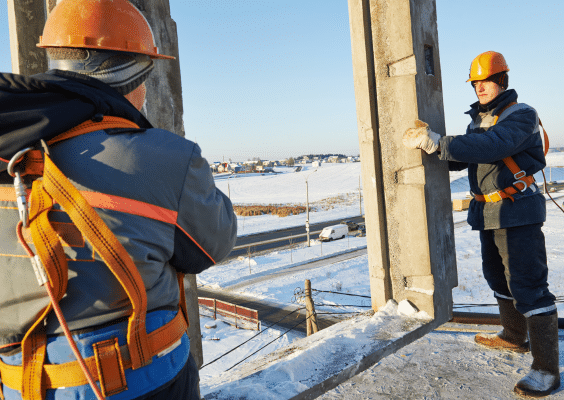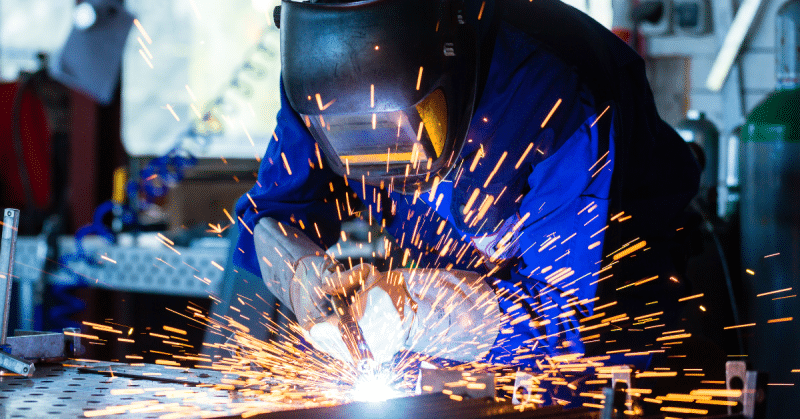
A Guide to Measuring the Effectiveness of Safety Equipment Programs
In the realm of workplace safety, ensuring the effectiveness of safety equipment programs is paramount. For health and safety managers, this responsibility involves not only
FREE SHIPPING ON $150+ USE CODE FREESHIPPING
FREE SHIPPING ON $150+ USE CODE FREESHIPPING

Working at heights is an inherent part of many industries, from construction and roofing to maintenance and window cleaning. Ensuring the safety of workers in these environments is paramount, and that’s where fall protection comes into play. Fall protection systems and equipment are designed to prevent or mitigate the consequences of a fall from an elevated work area. However, there are several common misconceptions surrounding fall protection that can jeopardize worker safety. In this blog, we will debunk these misconceptions and provide practical tips on how to ensure you are properly protected on the job site.
One of the most dangerous misconceptions is that fall protection is only necessary when working at extreme heights, such as on skyscrapers or bridges. In reality, falls can occur at any height, even a few feet above the ground. In fact, many accidents happen at relatively low heights, and underestimating the risks can lead to severe injuries. It’s essential to prioritize fall protection regardless of the height you’re working at.
Tip: Always assess the fall hazards on your job site, regardless of height. Employ the appropriate fall protection measures, such as guardrails, safety nets, or personal fall arrest systems (PFAS), as required.
Some workers believe that fall protection equipment is uncomfortable and hinders their ability to perform tasks effectively. While it’s true that wearing harnesses, lanyards, and other safety gear may take some getting used to, modern equipment is designed with comfort and ergonomics in mind. Wearing the right size and adjusting the equipment properly can significantly enhance comfort.
Tip: Choose well-fitted and comfortable fall protection equipment, and ensure that it’s correctly adjusted. Regularly inspect and maintain your gear to guarantee its functionality and comfort.
Another misconception is that fall protection is only needed on specific job sites or for particular tasks. Whether you’re working on a roof, a scaffolding, or a ladder, or even in confined spaces, there’s always a risk of falling. Fall protection should be an integral part of any job site safety plan, and it’s essential to tailor it to the specific hazards present.
Tip: Conduct a thorough risk assessment for each job and implement appropriate fall protection measures based on the specific tasks and conditions. This may include guardrails, safety nets, or PFAS.
Some businesses believe that investing in fall protection equipment and training is too costly. However, the cost of not providing fall protection can be much higher, including medical expenses, lost productivity, potential legal repercussions, and, most importantly, the well-being of workers.
Tip: Prioritize fall protection as a non-negotiable expense for your business. Investing in quality equipment and comprehensive training can help save lives and protect your bottom line.
Some workers and employers assume that once they’ve received fall protection training, they’re immune to accidents. In reality, safety is an ongoing commitment. Without regular refreshers and updates on best practices, workers may forget crucial information or become complacent.
Tip: Provide continuous training and reminders about fall protection best practices to ensure that your team remains vigilant and follows safety procedures consistently.
Fall protection is a vital component of workplace safety, and misconceptions about it can put lives at risk. By debunking these myths and implementing the tips provided in this blog, you can ensure that you and your team are properly protected on the job site. Remember, safety should always be a top priority, regardless of the height you’re working at or the type of job site you’re on.

In the realm of workplace safety, ensuring the effectiveness of safety equipment programs is paramount. For health and safety managers, this responsibility involves not only

In the realm of industrial safety, the significance of fire-resistant Personal Protective Equipment (PPE) cannot be overstated. As we mark Burn Awareness Week, it’s imperative

As we step into the promising realms of 2024, it’s time to reflect on the past and embrace the opportunities the future holds. In this
Brasco Safety Inc.
161 Athabascan Ave,
Sherwood Park, AB
T8A 4C8
View on Google Maps